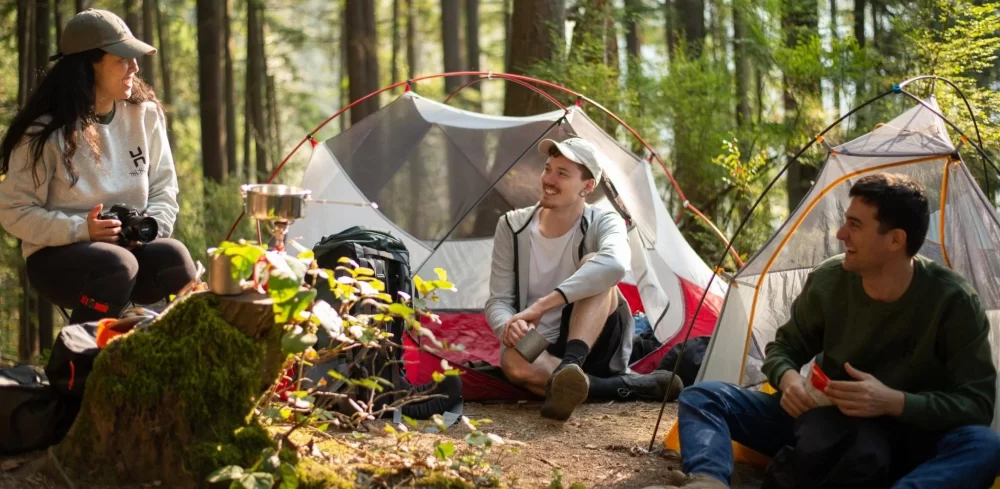- Importance-of-Sustainable-Camping-Practices
- Key-Eco-Friendly-Camping-Strategies
- Real-Life-Examples-and-Impact
- Choosing-Sustainable-Camping-Gear
- How-Pine-Cliff-Resort-Supports-Sustainable-Camping
1. Importance of Sustainable Camping Practices
Camping has become a beloved activity for millions across the USA, providing a way to reconnect with nature and enjoy the great outdoors. However, the rising popularity of camping has also brought environmental challenges such as habitat disruption, littering, and pollution. Sustainable camping practices in the USA are essential to minimize these negative impacts and preserve natural landscapes for future generations.
Adopting eco-friendly camping is more than just a trend; it is a responsibility. By understanding how our actions affect ecosystems, campers can reduce waste, protect wildlife, and conserve resources. This approach ensures that natural beauty and biodiversity remain intact, allowing everyone to enjoy clean air, water, and vibrant habitats year after year.
2. Key Eco-Friendly Camping Strategies
2.1 Minimizing Waste and Proper Disposal
A core sustainable camping practice involves managing waste efficiently. Campers should pack reusable containers and avoid single-use plastics, which often end up as litter in fragile environments. When waste is unavoidable, it must be disposed of in designated bins or carried out completely. Leaving no trace behind is a principle that helps maintain pristine campsites and prevents harm to wildlife.
2.2 Choosing Campsites Wisely
Selecting campsites that have minimal environmental impact is crucial. Established campgrounds or durable surfaces help prevent soil erosion and vegetation damage. In the USA, many parks and reserves offer guidelines on where camping is permitted, encouraging visitors to stay within designated areas to protect delicate flora and fauna.
2.3 Conserving Water and Energy
Water is a precious resource, especially in many parts of the USA prone to drought. Sustainable campers use water sparingly by bringing their own supply, avoiding contamination of natural sources, and employing biodegradable soaps. Energy conservation can be practiced by using solar-powered gadgets and minimizing campfire use, which also reduces the risk of wildfires.
3. Real-Life Examples and Impact of Sustainable Camping
One inspiring example comes from the popular Pacific Northwest region, where groups of campers have organized “Leave No Trace” clean-up campaigns. These efforts not only restore heavily used trails but also educate new campers on sustainable practices. Such community-driven initiatives have led to measurable improvements in ecosystem health and visitor experience.
Another story comes from a family who chose to camp responsibly at a national park in the Southwest USA. By using solar lanterns, carrying reusable utensils, and adhering strictly to park regulations, they enjoyed nature without leaving harmful footprints. Their positive experience demonstrates how sustainable camping can be both rewarding and enjoyable.
4. Choosing Sustainable Camping Gear
4.1 Materials and Durability
Sustainable camping gear plays a significant role in reducing environmental impact. Products made from recycled or organic materials, such as tents with recycled polyester fabric or biodegradable cookware, help lower the carbon footprint. Durable gear also means fewer replacements and less waste over time.
4.2 Energy-Efficient Equipment
Modern eco-friendly camping gear often includes solar chargers, LED lighting, and fuel-efficient stoves. These technologies enable campers to reduce reliance on disposable batteries and fossil fuels. Investing in such equipment not only benefits the environment but enhances convenience and safety on outdoor trips.
5. How Pine Cliff Resort Supports Sustainable Camping
For campers seeking both quality and sustainability, Pine Cliff Resort offers a curated selection of eco-friendly camping products and expert advice. From recyclable camping essentials to energy-efficient gadgets, the resort emphasizes responsible outdoor living aligned with sustainable camping practices in the USA.
Visitors to Pine Cliff Resort can also access tailored services that promote environmental stewardship, such as guided eco-tours and workshops on green camping techniques. This commitment not only enriches the camping experience but empowers individuals to make a positive impact during every outdoor adventure.







